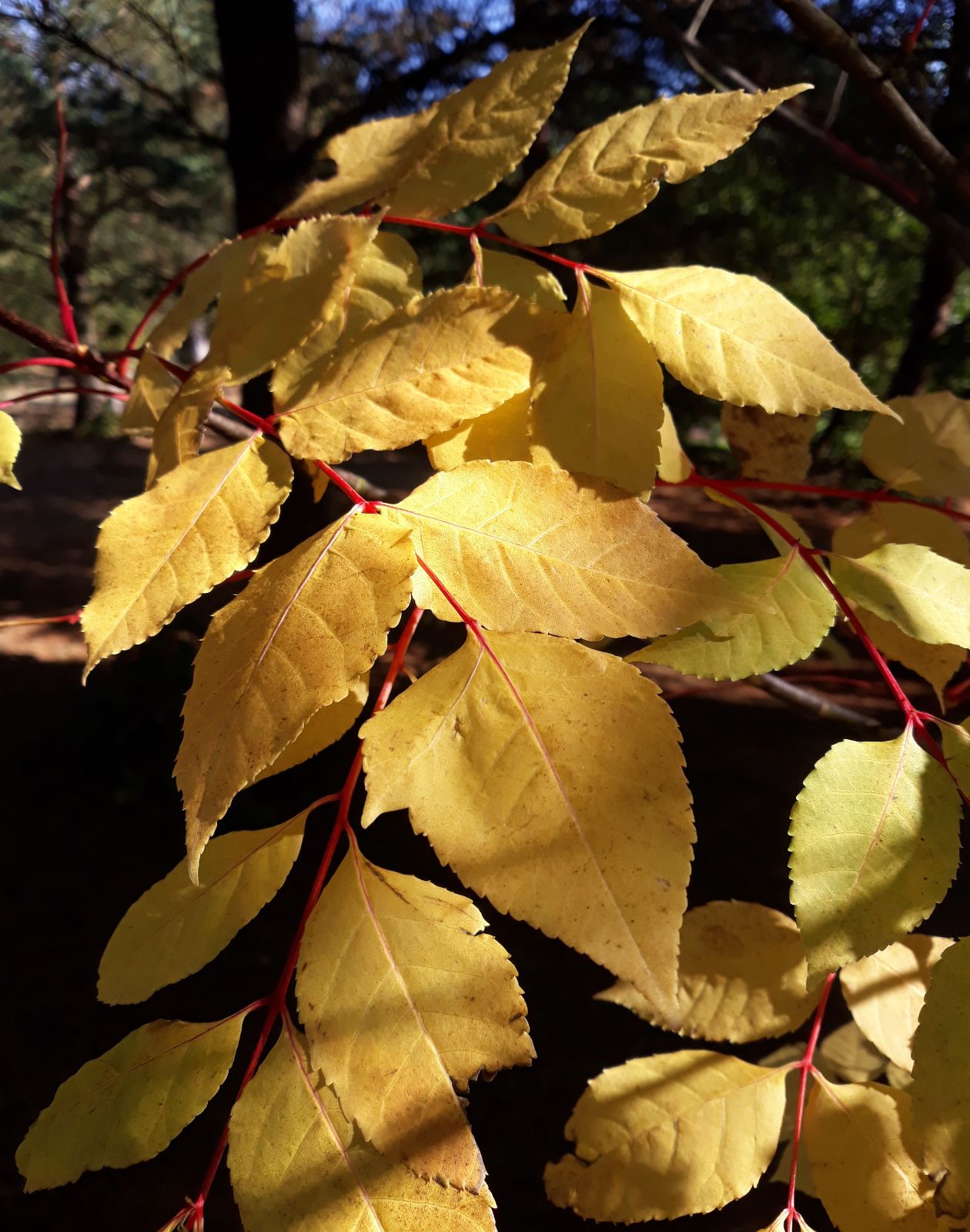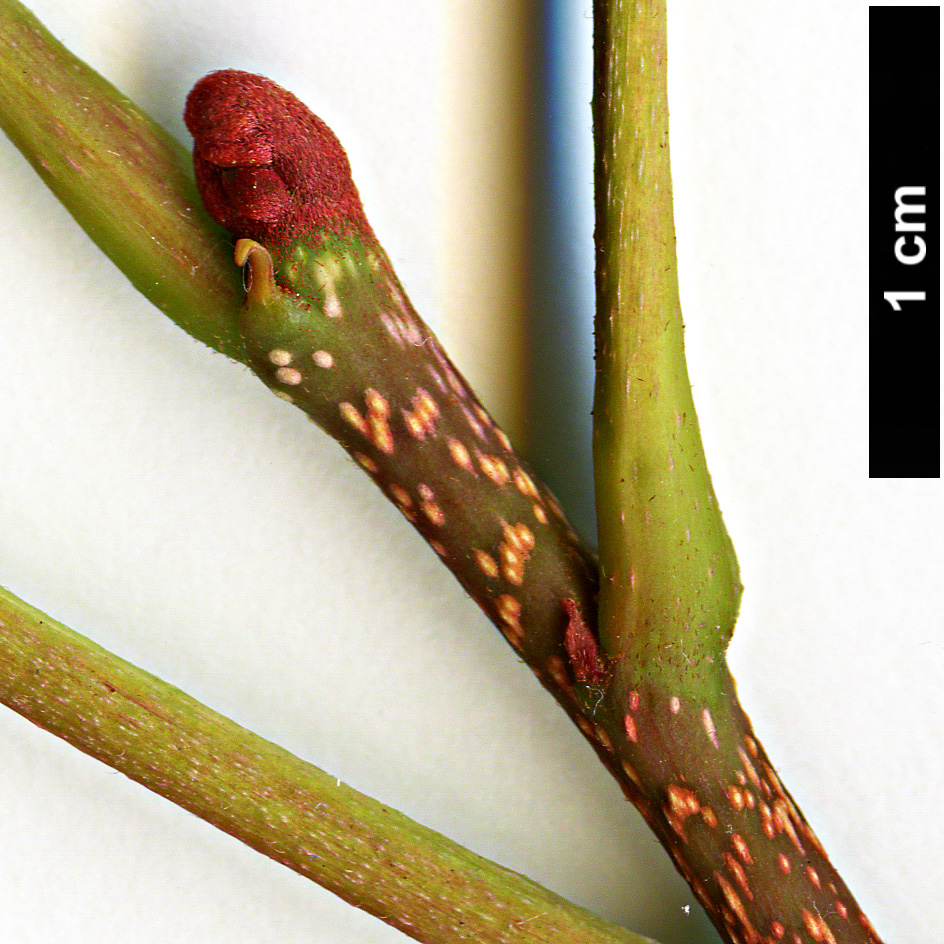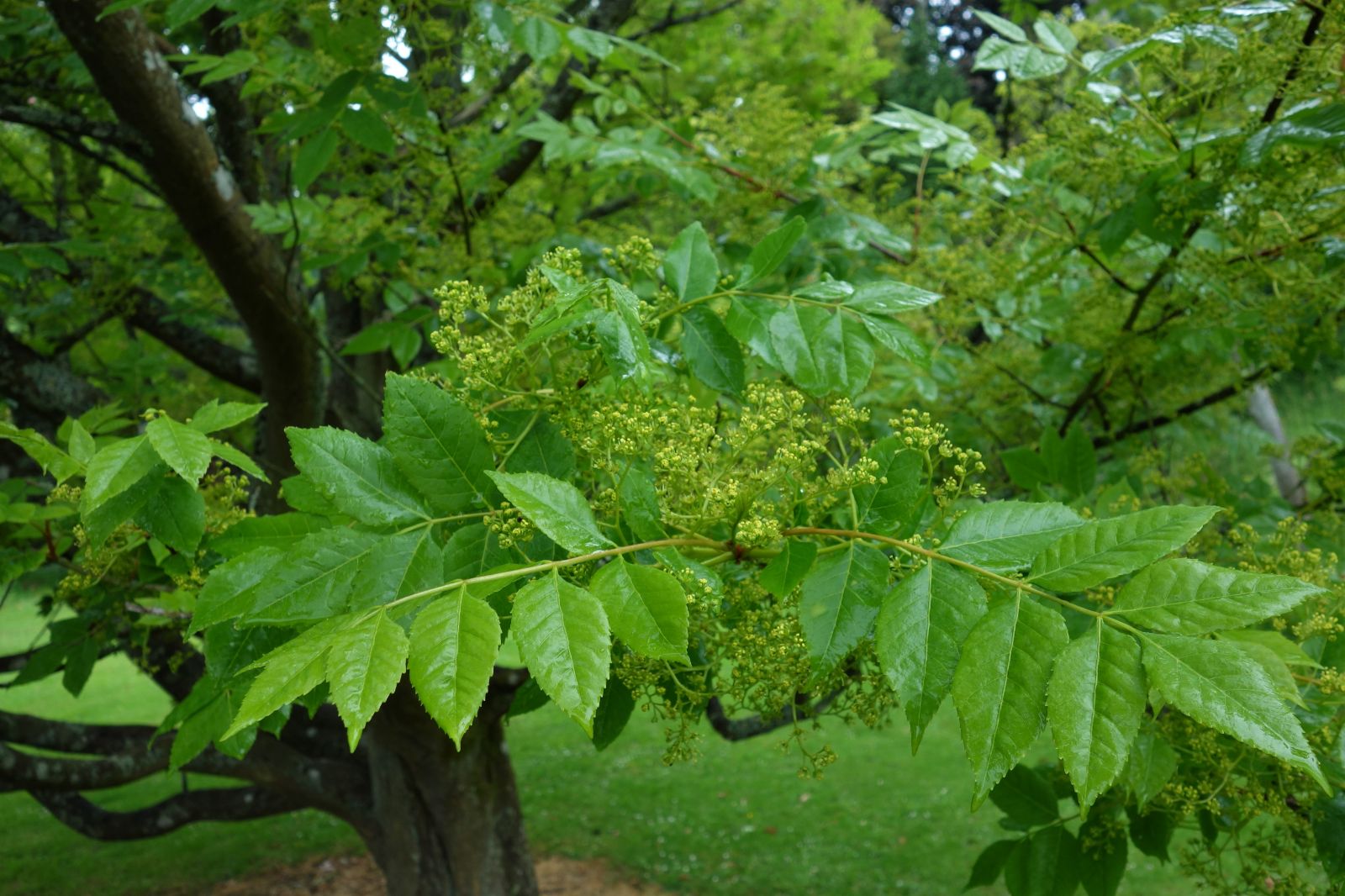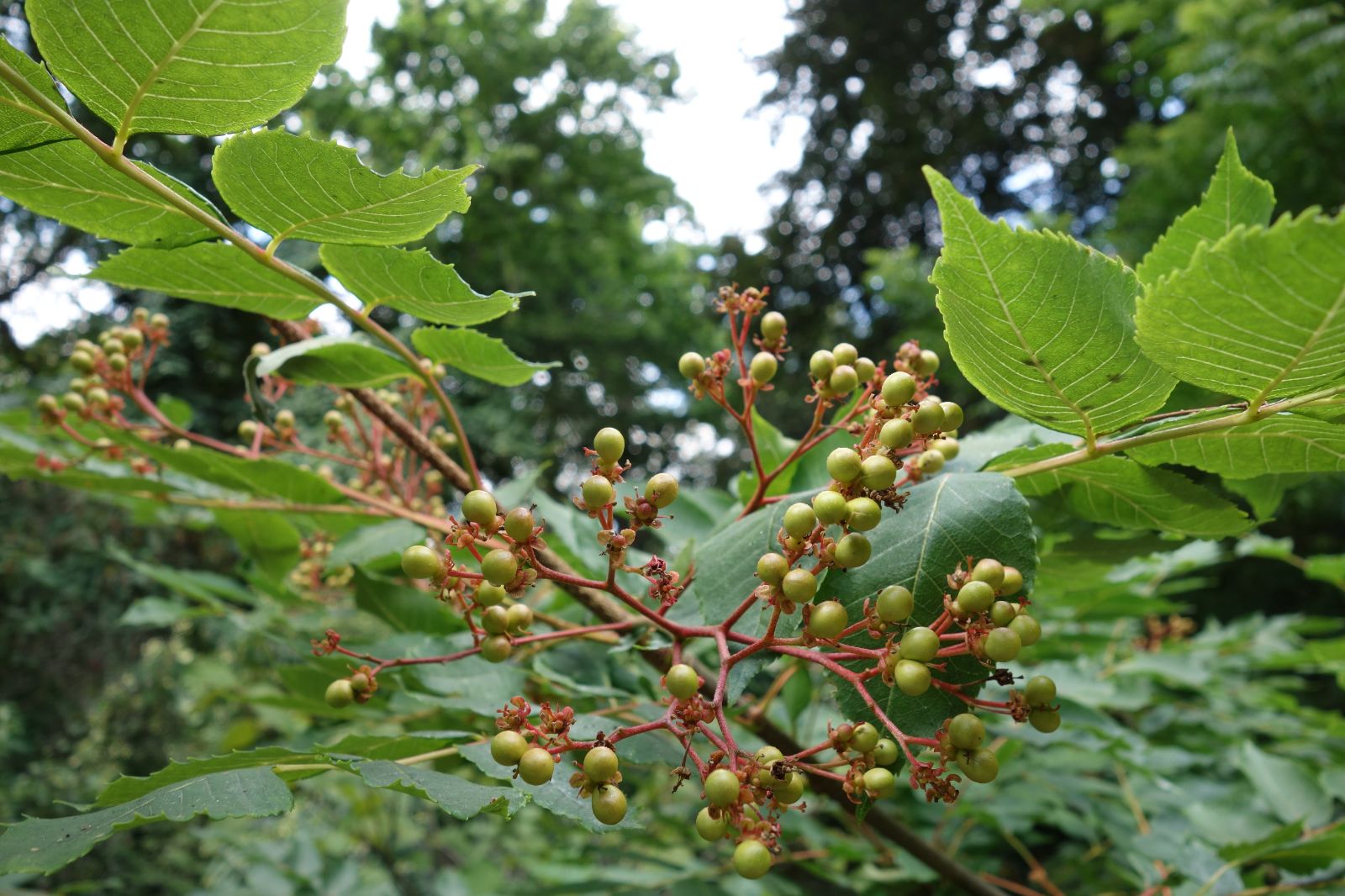Picrasma quassioides
Credits
Article from Bean's Trees and Shrubs Hardy in the British Isles
Recommended citation
'Picrasma quassioides' from the website Trees and Shrubs Online (treesandshrubsonline.
Genus
Synonyms
- Simaba quassioides D. Don
- Picrasma ailanthoides Planch.
Other taxa in genus
A slender, deciduous tree 20 to 40 ft high, with very handsome young bark of a reddish brown, conspicuously marked with yellow spots. Leaves alternate, pinnate, 10 to 15 in. long, glabrous, consisting of nine to thirteen leaflets, which are glossy green, 1 to 4 in. long, ovate, unequal at the base, round or pointed at the apex, sharp-toothed at the margin, and with a very short stalk. Flowers green, 1⁄3 in. across, in a lax, branching corymb 6 to 8 in. long, and often nearly as wide; stalks downy. Fruit a berry, about the size of a pea, red, rather obovoid, with the calyx still attached. Bot. Mag., n.s., t. 279.
This tree is widespread in the wild state, from Japan and Korea through China to the Himalaya. The above description is based on trees growing at Kew which were introduced from Japan in 1890. They have flowered and borne fruit several times, and young plants have been raised from the seed. They have no beauty of flower or fruit, but of the foliage in autumn Sargent observes, ‘few Japanese plants I saw are as beautiful as this small tree’. The leaves turn first orange then scarlet. The whole tree is permeated by a singularly bitter principle.
P. quassioides is rare in cultivation, the following being the only sizeable ones on record: Kew, near the Stone Pine, 29 × 5 ft at 6 in. (1967); Wakehurst Place, Sussex, a many-stemmed plant 20 ft high; University Botanic Garden, Cambridge, pl. 1923, 18 × 11⁄2 ft at 3 ft (1969); Westonbirt, Glos., Mitchell Drive (East), pl. 1919, 26 × 1 ft (1967).
From the Supplement (Vol. V)
specimens: Kew, near Stone Pine, 28 × 51⁄2 ft at 1⁄2 ft (1981); Wakehurst Place, Sussex, 20 ft high, many-stemmed (1968); University Botanic Garden, Cambridge, pl. 1923, 20 × 2 ft at 3 ft (1982); Westonbirt, Glos., Mitchell Drive (East), pl. 1919, 30 ft, on three stems each 11⁄4 ft (1980).













